Herbal Love Story: Discover how nature’s herbs lavender, rose, mint, sage and more heal broken hearts, deepen devotion, and nurture tender love in simple, meaningful ways. Read heartfelt stories of botanical romance and learn how small acts of kindness, scent, and ritual can transform feelings and relationships.
Writer’s Introduction
Love and nature have always shared a secret language. Every herb from lavender’s calm whisper to rosemary’s promise of remembrance carries an emotion that mirrors the human heart. In these original Herbal Love Stories, love grows where roots meet rain, and healing begins in the tender hands of those who nurture. These tales are not about grand gestures but quiet devotion the kind that blooms slowly, like a leaf turning toward the sun.
1. “Lavender Letters” The Healing Garden of Elara
The Woman Who Stopped Dreaming
Elara lived on the edge of a sleepy English village, surrounded by lavender fields that once filled her childhood with laughter. After losing her husband, she stopped tending her garden and stopped writing letters, the only thing that once made her heart bloom.
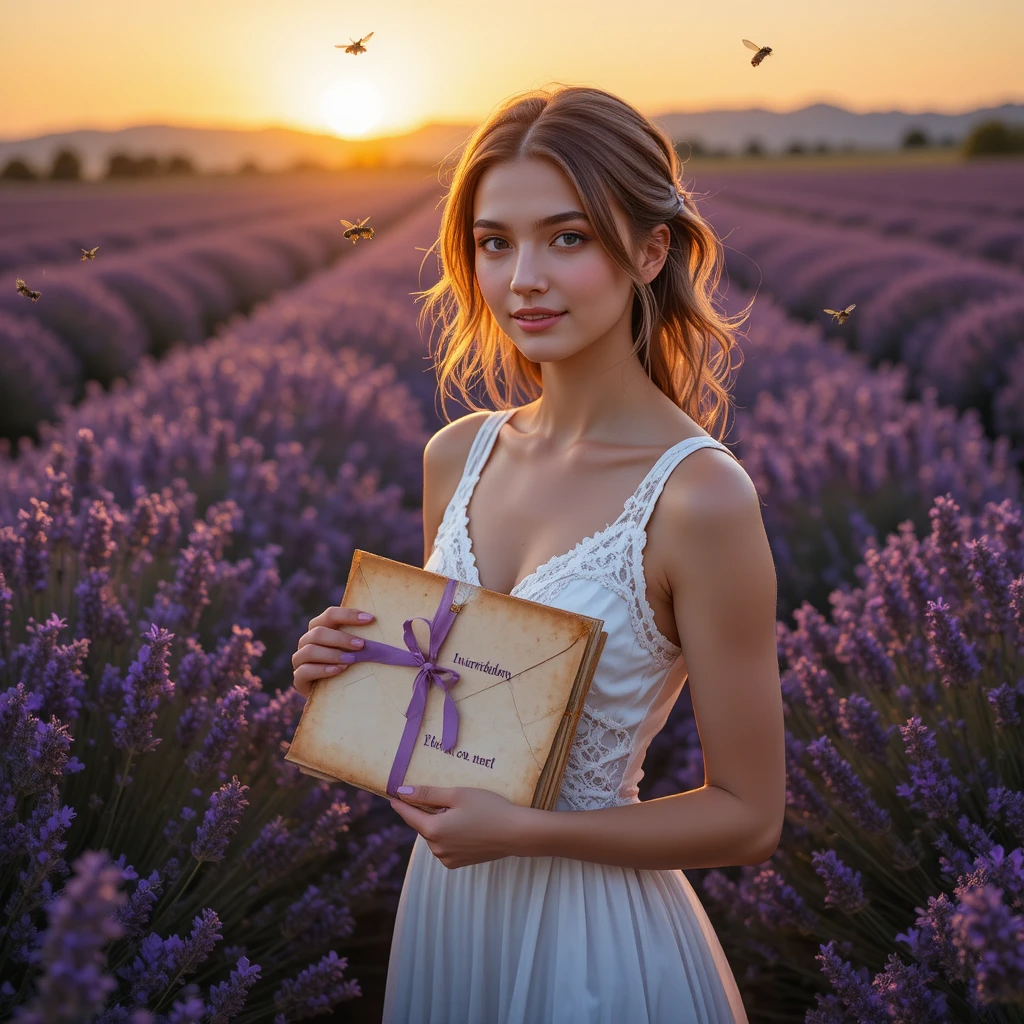
A Letter from the Past
One morning, she received a weathered envelope addressed in her late husband’s handwriting. Inside was a pressed lavender sprig and a note: “Plant me again when you’re ready to dream.” Unsure if it was fate or coincidence, Elara walked to the abandoned garden and began to plant again a single stem at first, then rows upon rows.
The Bloom of Healing
Every sunrise brought new life. Bees returned, scent filled the air, and Elara began writing letters again this time to herself. Her pain turned to poetry, her loneliness to light. Lavender taught her that love, once rooted, never truly fades; it just waits for new seasons.
2. “Rosewater Promises” The Apothecary’s Secret
The Perfumer’s Son
In the bustling streets of Istanbul, Rafiq, the son of a humble apothecary, spent his days mixing rosewater and herbs for travelers. When Selin, a painter from the distant coast, visited his shop searching for a rare oil, he noticed how the rose scent lingered longer when she was near.
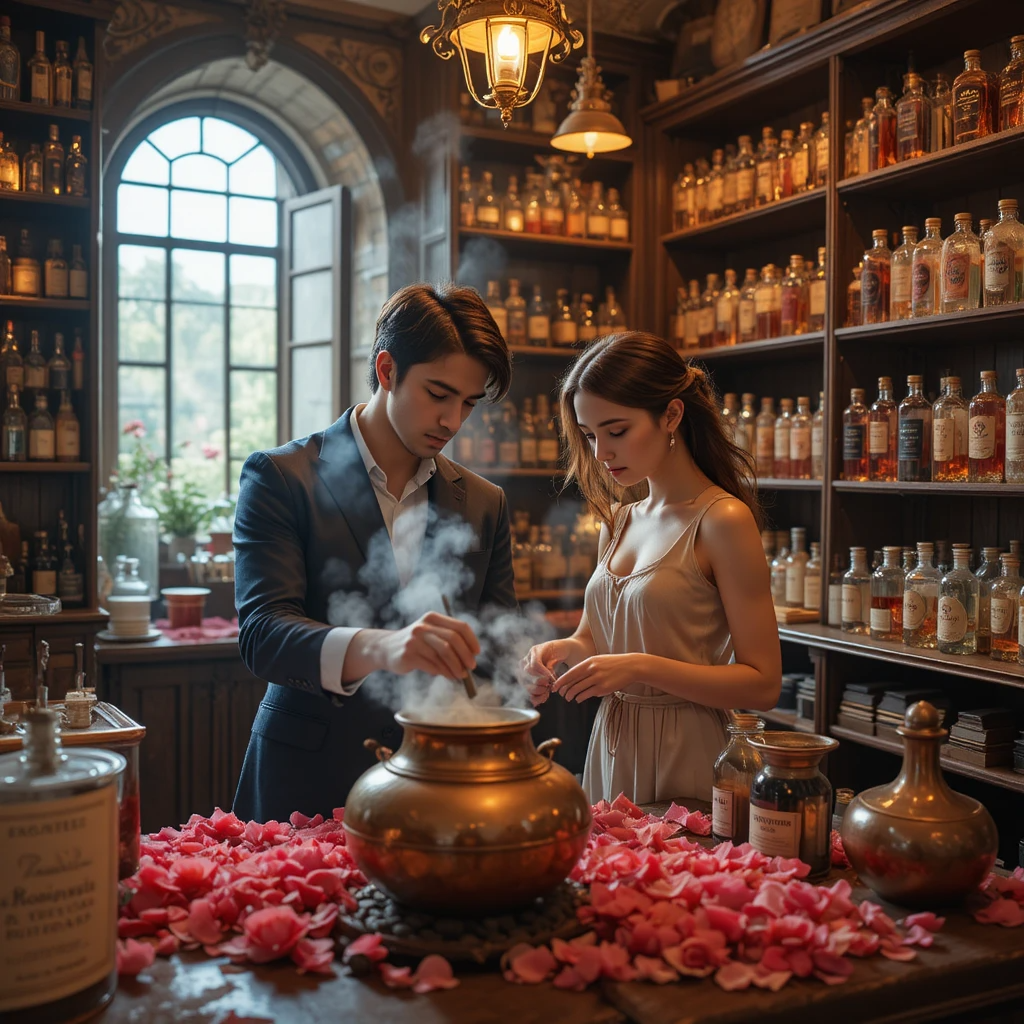
The Hidden Formula
They began experimenting together blending petals, cinnamon, and clove crafting a perfume they called “The Promise of Morning.” But as Selin’s departure day neared, Rafiq realized that the fragrance they created captured more than scent; it held every unspoken word between them.
A Scent That Never Fades
Years later, people swore that Rafiq’s shop smelled of love faint rose, warm spice, and sea breeze. He never married, but every bottle he sold carried her memory, a promise sealed in fragrance. The rosewater became a legend a perfume that healed the heart but left a trace of longing.
3. “The Mint Keeper” A Tale of New Beginnings
The Forgotten Greenhouse
In a misty mountain village, Noor, a botanist weary of heartbreak, inherited her grandmother’s forgotten greenhouse. Inside, she discovered jars of dried mint labeled with hand-written notes like “For courage” and “For second chances.”
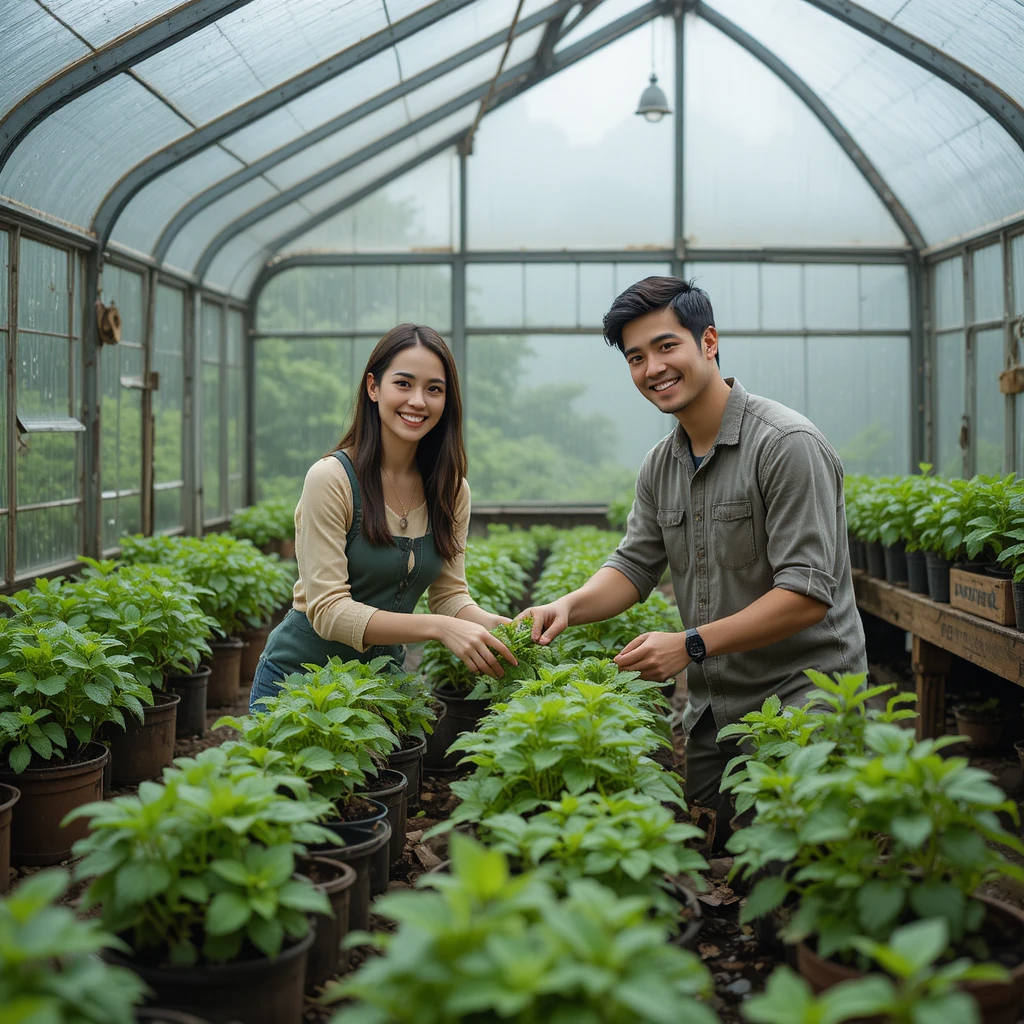
The Stranger in the Rain
One rainy afternoon, a traveler named Elias knocked on her door seeking shelter. He carried books on herbal medicine and the same sense of loss Noor saw in her own reflection. As days turned into weeks, they worked side by side restoring the mint beds, laughing over soil-stained hands and herbal teas.
Mint and Memory
When Elias left, Noor found a note under a jar of mint: “For courage in case you forget to believe again.”
That spring, the mint grew taller and sweeter than ever before. And though he was gone, Noor finally understood her grandmother’s lesson love, like mint, revives even after being crushed.
4. “Sage and the Moon” The Herbalist’s Daughter
The Curse of Silence
In a quiet seaside town, Maris, daughter of a wise herbalist, was born with a curse she could not speak. Her mother taught her the language of herbs instead: chamomile for calm, sage for protection, rosemary for truth.
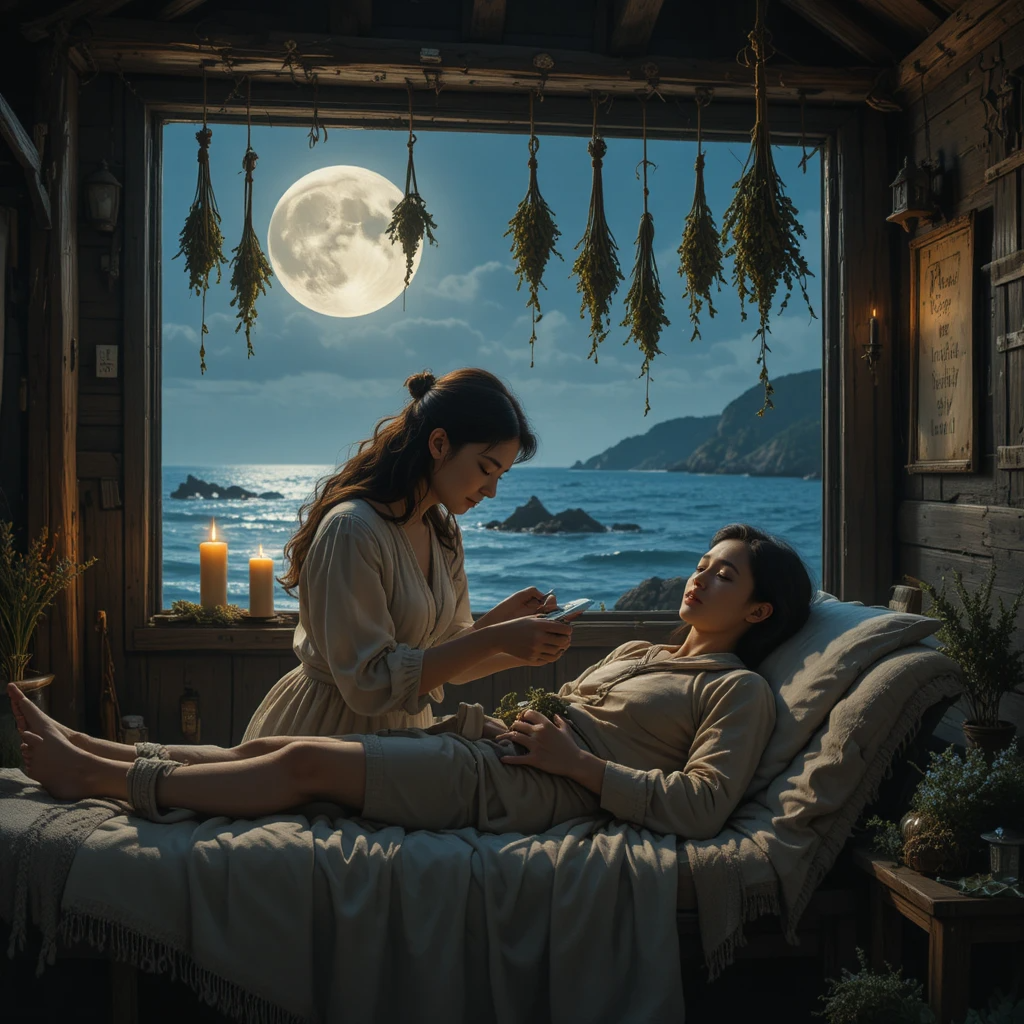
A Sailor’s Visit
One stormy night, a shipwrecked sailor named Corin washed ashore, wounded and feverish. Maris tended to him using her herbs, wrapping his wounds with sage and whispering prayers he could not hear. Yet somehow, he felt them.
The Voice of Love
When Corin finally sailed away, Maris stood by the cliff, scattering sage leaves into the sea. Legend says the ocean carried her silent wishes to him, for months later, sailors claimed to hear her humming voice in the wind the herbalist’s daughter who finally learned to speak through love.
5. “Thyme of Our Lives” A Love Rewritten by Nature
The Writer and the Widow
Luca Maren, a reclusive novelist, moved to Tuscany seeking peace after a failed marriage. His neighbor, Bianca Rossi, a widow who owned an herb farm, became his unexpected muse. She gifted him bunches of thyme, saying it “helps memory and forgiveness.”

The Season of Change
As Luca helped her harvest, he began writing again not tragedies, but tender stories filled with healing and sunlight. Each cup of thyme tea became their quiet ritual, each laugh another word in an unwritten love story.
A Garden of Words
When Bianca passed away years later, Luca planted an entire field of thyme in her honor. Visitors say the breeze there smells of hope and if you listen closely, you can almost hear two souls laughing beneath the Tuscan sun.
Conclusion: Where Love and Nature Breathe Together
From lavender’s calm to thyme’s forgiveness, every herb in these stories tells us one truth love is a living thing. It grows, heals, and renews, even after loss. These Herbal Love Stories remind us that nature holds our hearts gently, teaching that affection doesn’t need grand gestures; sometimes it just needs a leaf, a scent, and time.
If you enjoyed this collection, explore more soul-nourishing reads like Love Stories That Touch the Heart
Story 1: Love Blossoms in the Herbal Garden
At the edge of a quiet village, there was an old garden where roses, lavender, chamomile, and mint filled the air with fragrance. Villagers believed this garden carried a mysterious power it healed not just the body but also the heart and soul.

The garden was cared for by a young herbalist named Amira. She believed that every leaf and every flower carried not only medicinal value but also a hidden story. To her, herbs were more than plants; they were whispers of nature, waiting to comfort those who listened.
One evening, as the sun was setting, a weary traveler named Elias walked into the garden. His eyes were heavy with sadness, his steps slow with exhaustion. He said little, but Amira could sense a deep loneliness within him. She quietly handed him a cup of lavender and lemon balm tea.
Elias took a sip, and for the first time in a long while, he smiled faintly. “It feels,” he said softly, “as though the garden itself is speaking to me.”
From that day onward, Elias returned every evening. Each time, Amira offered him a different tea. Chamomile to soothe his burdens, peppermint to clear his troubled thoughts, rose tea to remind him of gentleness and love. Slowly, Elias realized that the garden was not just filled with plants it was alive with emotions.
Amira also shared the traditions of old: that brides once wore rosemary to keep love alive, that lavender symbolized loyalty, and that hibiscus was a secret sign of affection. Elias listened carefully, amazed that such simple herbs carried such deep meaning.
Day by day, his heart grew lighter. He read books that confirmed what Amira had told him: lavender calms the mind, chamomile brings rest, lemon balm lifts the mood. He was astonished that both science and love were hidden in the same cup of tea.
Evenings became their quiet ritual. They sat together in silence, sipping chamomile under the stars. In the mornings, mint refreshed their spirits. At sunset, hibiscus glowed in their cups like the red sky above. Their words were few, but their silence was filled with connection. Elias came to understand that love does not always arrive in grand gestures. Sometimes, it blooms slowly, hidden in the quietness of a shared cup of tea, or the comfort of a smile.
Seasons changed; flowers withered and blossomed again. But the bond between Amira and Elias only grew stronger. One evening, Elias confessed: “I thought I was broken. But you and your herbs showed me that love itself can be a kind of healing. It grows quietly, like roots beneath the earth, unseen but strong.”
Amira smiled and handed him a cup of rose tea. “That is the secret of this garden,” she said. “Love and healing are the same. Both need patience and care. If you nurture them, they last forever.”
And so, the garden became more than just a place of plants. It became a story a love story written not in words, but in herbs, healing, and the gentle rhythm of two hearts finding each other.
Moral: Love and healing are deeply connected. True love does not always come with noise or urgency; sometimes it arrives quietly, like the slow medicine of herbs, healing both heart and soul with time.
Story 2: Whispers of Lavender
In a valley where lavender fields stretched endlessly, a young woman named Selene worked as a gatherer. Each summer, she collected lavender to make oils and teas for the villagers. People said her lavender had an unusual quality it calmed even the most restless hearts.
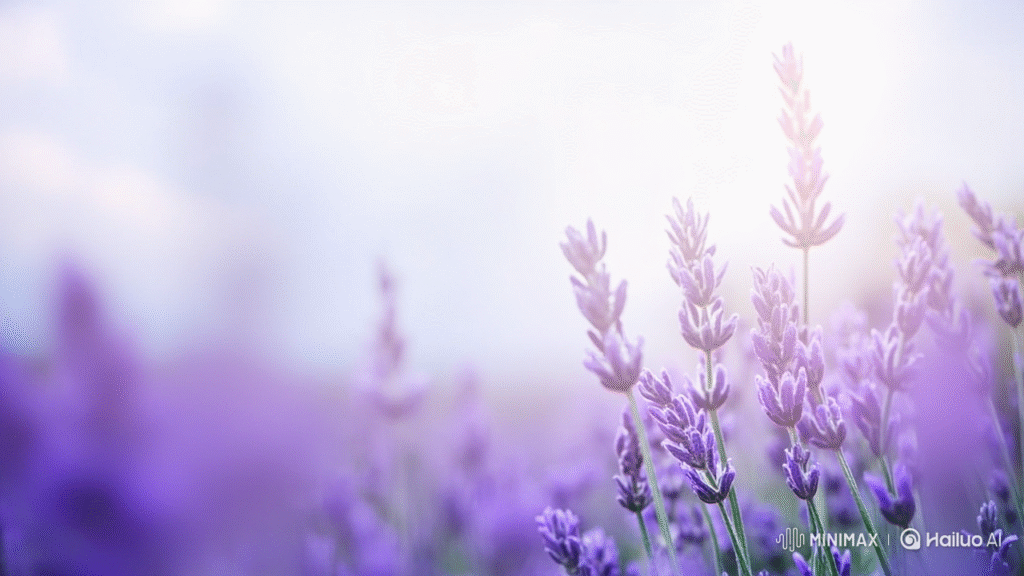
One day, a soldier named Darius returned from war. His body was strong, but his spirit was weary. Nightmares haunted him, and his hands trembled with memories of battle. The villagers told him, “Go to Selene, her lavender will ease your heart.”
At first, Darius resisted. He believed nothing could heal what he had seen. But one restless night, desperate for peace, he visited Selene’s small cottage. She welcomed him with kindness, lit a lamp, and brewed him lavender tea.
The aroma filled the room like a soft lullaby. As he drank, he felt his heartbeat slow, his breath soften. For the first time in years, he slept without fear. When he woke, Selene was still there, watching gently, as though guarding his rest.
Night after night, he returned. Sometimes they talked, sometimes they sat in silence. Slowly, he realized that the lavender was not just soothing him it was teaching him to let go, to breathe again, to trust life.
Seasons passed, and the lavender fields bloomed in waves of purple. Selene taught Darius how to tend the plants, how to dry their flowers, how to distill their oils. With each passing day, Darius felt his brokenness turn into something whole.
One evening, as the sun dipped below the horizon, Darius confessed: “I thought I would never heal. But this lavender, and you, have shown me that healing is not forgetting. It’s learning to live again.”
Selene smiled, placing a sprig of lavender in his hand. “Healing and love,” she whispered, “both take time, but they always bloom if we care for them.”
Moral: True love, like lavender, soothes pain and restores peace. Healing is not about erasing the past, but about finding comfort in the present and hope in the future.
Story 3: The Rose of Eternity
Long ago, there was a garden said to hold a rose that never withered. The legend claimed that whoever found it would discover eternal love. Many searched, but none returned with proof.
In this village lived a healer named Mira. She spent her life studying plants, believing every flower carried a secret. One day, a traveler named Aric came to her door, seeking herbs for his sick mother. Mira agreed to help, but when she handed him rose petals for tea, he paused.

“These roses,” he whispered, “they smell like the dream my mother once told me the Rose of Eternity.”
Mira laughed gently. “Legends are beautiful, but roses are just roses.”
Yet something in Aric’s eyes made her curious. Together, they began to search the forest, following ancient songs and forgotten maps. Days turned into weeks, weeks into months. Along the way, they discovered not just plants, but each other. He told her of his mother’s kindness, she told him of her devotion to nature.
Finally, in the heart of the forest, they found it a single rose that glowed faintly even in the dark. Mira touched it carefully. Unlike other roses, this one did not fade.
Aric looked at her and said softly, “Maybe the Rose of Eternity was never just a flower. Maybe it is what we found on this journey.”
Mira realized then that love, like the rose, was not meant to be perfect or fleeting. It was meant to be nurtured, protected, and cherished. They carried the rose back to the village, not as proof of magic, but as a symbol of what patience and care could grow.
Moral: Eternal love is not found; it is created through devotion, patience, and shared journeys. The true Rose of Eternity is the love we nurture together.
Story 4: Chamomile Dreams
Amara was known in her village as the “keeper of sleep.” Her small garden was filled with chamomile, and she prepared teas that helped restless children, anxious farmers, and weary mothers find rest.
But Amara herself was lonely. She often wondered who would bring rest to her own heart.

One autumn, a poet named Leon arrived in the village. He wandered the fields, searching for inspiration, but he was troubled by insomnia. Words filled his mind like storms, never letting him rest. The villagers told him, “Go to Amara, her chamomile will calm you.”
Leon visited her garden, skeptical but desperate. She offered him warm tea, golden like sunlight, sweetened with honey. That night, for the first time in weeks, he slept deeply, dreaming of stars and gentle rivers.
The next morning, he returned with a smile and a poem. He read it aloud to Amara: “Chamomile dreams, soft as her hands, quiet as her heart.”
Night after night, he came back. Sometimes he brought poems, sometimes flowers. Sometimes he simply sat by her side as she dried herbs. Amara found herself laughing again, her loneliness slowly fading like mist.
One evening, Leon admitted, “I came here searching for poetry, but I found something deeper. You have given me rest not just for my body, but for my soul.”
Amara, blushing, replied, “And you have shown me that love can be as gentle as chamomile — not loud, not overwhelming, just peaceful.”
Moral: Love does not always arrive with passion or fire. Sometimes, true love is gentle, steady, and healing like chamomile, it brings peace to the soul.
Story 5: The Mint of New Beginnings
In a bustling city, surrounded by noise and smoke, there was a tiny rooftop garden owned by a man named Karim. His favorite plant was mint fresh, green, alive with energy. He said it reminded him that even in chaos, new life could grow.
One day, his neighbor Layla moved in next door. She was an artist, but she had stopped painting after losing someone she loved deeply. She lived quietly, her spirit heavy with grief.

One afternoon, as she sat alone, the scent of mint drifted from Karim’s garden. Curious, she stepped outside and saw him brewing tea. He smiled and offered her a cup.
The cool, refreshing taste surprised her. “It feels… alive,” she said softly.
Karim laughed. “That’s mint. It clears the mind and wakes the heart. Maybe it can wake yours too.”
Day after day, Layla joined him on the rooftop. Together, they sipped mint tea and watched the city lights. Slowly, Layla picked up her paintbrush again, inspired by the freshness around her. She painted the garden, the cups of tea, the laughter they shared.
One evening, Karim confessed, “I planted mint to remind myself that life always begins again. I never thought it would bring me you.”
Layla smiled through tears. “And I never thought I would find love in something as simple as a leaf. But here we are.”
Moral: Mint symbolizes renewal and hope. True love often comes when we least expect it, reminding us that even after loss, life and love can begin again.
Story 6: The Basil of Devotion
In a quiet village by the river, basil was not just a plant it was sacred. People believed basil symbolized faithfulness and devotion. A young woman named Liora tended the village’s basil garden. Her devotion to the plants was so pure that villagers often said, “If you want your love to last, ask Liora for basil.”
One day, a musician named Elias arrived. He played his violin in the town square, but though his music was beautiful, his eyes carried sadness. He had once loved deeply, but his beloved had left him, leaving his songs hollow.
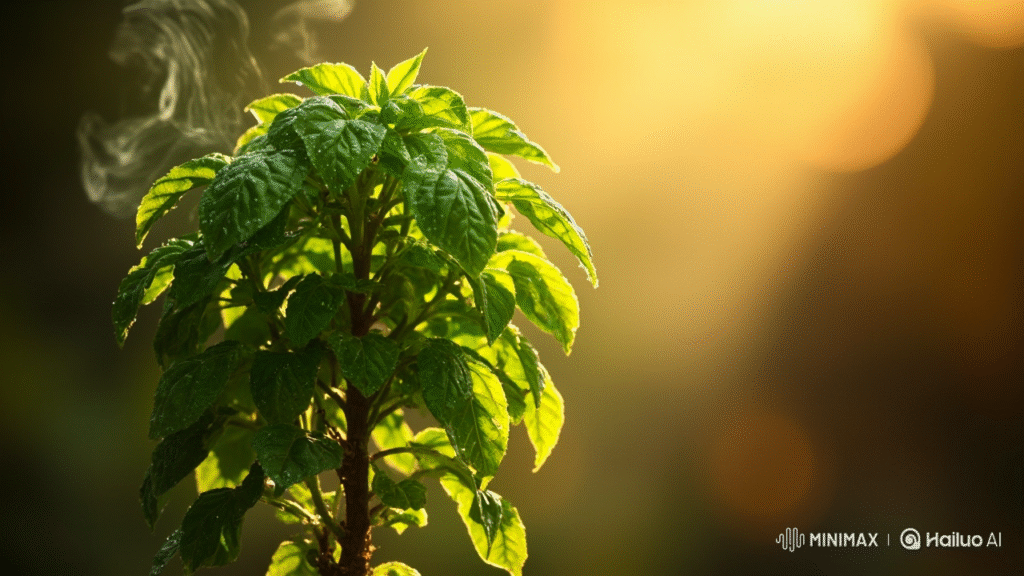
When he met Liora, she offered him basil tea. He laughed at first, saying, “How can a leaf mend a broken heart?” But the aroma surprised him fresh, warm, and full of life. As they talked, he learned that basil was not only for flavor but also for healing.
Elias returned often, bringing music to her garden. Slowly, his songs changed from sorrowful to hopeful, from lonely to joyful. He realized that Liora’s presence was weaving itself into his melodies, just like basil weaving its fragrance into every dish.
One evening, he confessed: “You’ve taught me that devotion is not about clinging to the past, but about caring for what grows in the present. You are my present, Liora.”
She smiled, placing basil leaves into his hand. “Love, like basil, needs care every day. With devotion, it will always flourish.”
Moral: Basil teaches us that love is not just passion, but daily devotion. True love grows strong when we nurture it with patience and care.
Story 7: The Sage of Wisdom and Love
In the mountains, where the air was cool and the nights long, a healer named Seraphine lived alone. Her garden was filled with sage, known by villagers as the herb of wisdom. People came to her seeking cures for illness, but also guidance for their hearts.
One winter, a scholar named Adrian arrived. He was intelligent but restless, always chasing knowledge, never finding peace. His mind was full of questions, but his heart was empty.
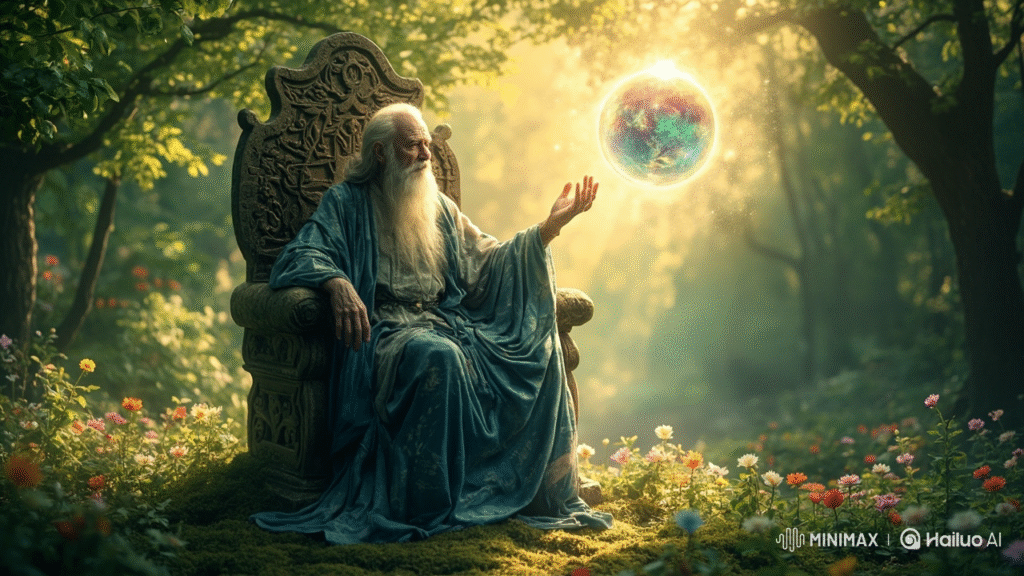
Seraphine welcomed him and brewed sage tea, its earthy fragrance calming his thoughts. “Wisdom,” she told him, “is not found only in books, but also in silence, in love, and in the way we live.”
Adrian stayed longer than he intended. By day, he read by the fire while she dried herbs. By night, they shared stories beneath the stars. Slowly, he began to see that love and wisdom were not separate they were intertwined, like sage leaves growing in pairs.
One evening, as snow fell softly, Adrian said, “I thought wisdom was knowledge. But you’ve shown me that wisdom is also knowing who to give your heart to.”
Seraphine placed a sprig of sage in his hand. “And you’ve shown me that love is not separate from wisdom. It is the wisest choice of all.”
From then on, they tended the mountain garden together, their love as steady and enduring as the sage that grew year after year.
Moral: Sage reminds us that wisdom and love are inseparable. True love is not blind it is wise, patient, and everlasting.
5 Herbal Love Story
Story 1: The Herbal Love Story of Rose and Ayaan
In the heart of a quiet valley surrounded by mountains, there was a small village where nature ruled with harmony. In this village lived Rose, a young herbalist who had inherited her grandmother’s apothecary. From dawn till dusk, she collected plants, dried petals, and mixed tinctures in glass jars that sparkled in the sunlight. For Rose, every herb carried its own tale: lavender spoke of peace, basil whispered of loyalty, rosemary protected lovers, and jasmine sang the songs of eternal affection. To her, life itself was a living herbal romance.

Her apothecary was no ordinary shop it was a place where villagers came not just for medicines, but for hope, healing, and sometimes, matters of the heart. People often said, “If your heart is confused, go to Rose. She will brew you the right tea.”
One summer afternoon, a traveler named Ayaan arrived at the shop. He wasn’t a villager but a wanderer who had journeyed through forests and deserts. He stood before Rose’s counter, nervous yet determined. “I need help,” he whispered. “Not for my health, but for my heart.”
Rose listened intently. Ayaan confessed that he had loved a childhood friend for years but had never had the courage to speak. His voice trembled with both longing and fear.
Rose thought for a moment, then walked to her shelves lined with jars. She carefully chose rose petals for passion, chamomile for courage, and thyme for truth. She blended them into a warm sachet of tea and handed it to him. “This is not magic,” she said gently, “but sometimes, the right herbs remind us of the strength we already carry.” She called it “The Herbal Love Story Tea.”
Over the following weeks, Ayaan returned not only for tea but for conversation. He shared tales of his travels, his dreams, and his fears. Rose found herself looking forward to his visits, her heart beating faster whenever she saw him. Slowly, without realizing, their connection grew.
One evening, under the glow of lantern light, Ayaan admitted softly, “I came here searching for romantic herbal remedies to help me love another. But somewhere along the way, my heart has chosen you.”
Rose was silent at first, her heart fluttering, then she smiled. “Perhaps the herbs only guided you to where love already lived.”
Together, they transformed the apothecary. They created a special corner known as the love herbs for couples shelf, where blends were sold not for healing bodies but for nurturing relationships. Lovers from neighboring towns traveled just to buy their “Commitment Tea,” “Forgiveness Brew,” or “Moonlit Passion Blend.”
The villagers often said that Rose and Ayaan’s tale was more than just romance it was a botanical love story. A story where healing, courage, and affection bloomed together, proving that sometimes, the greatest remedy is love itself.
Story 2: Lavender Letters A Botanical Love Story
On the edge of a sprawling lavender field lived Amira, a quiet girl who poured her heart into words. She believed herbs carried emotions, and so she wrote letters and tied them with bundles of dried lavender and rosemary known to many as love herbs. Her grandmother had told her, “Lavender is for devotion, rosemary for remembrance. Together, they bind hearts.”
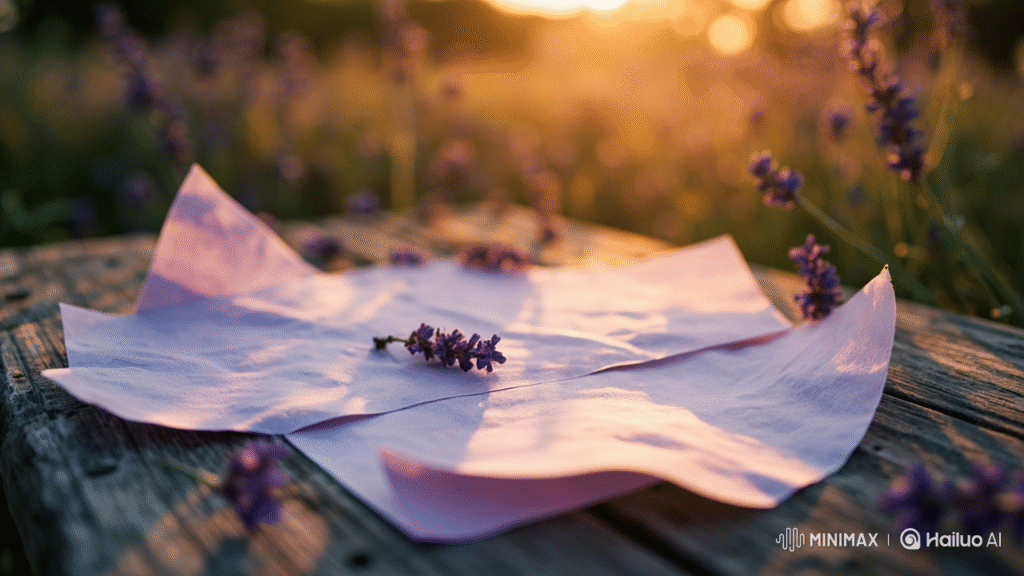
Every week, Amira placed her letters at the village market, tucked between herbs and flowers, hoping someone might discover them. Each letter carried a wish: “May love find me in a form as gentle as lavender and as strong as rosemary.”
One summer morning, Elias, a traveling poet, strolled through the market. He was drawn to the fragrance of Amira’s herbs. His eyes fell upon a small parchment tied with lavender. He opened it and read her words. His heart stirred here was a soul that spoke in the language of herbs and longing, just as he did in verse.
Instead of discarding the letter, Elias wrote back. He slipped a reply among her flowers the following week. His words spoke of herbal romance, how thyme represented courage in love and mint symbolized clarity of heart.
When Amira discovered his reply, her hands shook with excitement. From then on, they exchanged letters hidden within bundles of romantic herbs herbs that carried stories as ancient as time. Their writings grew longer, filled with verses about romantic herbal traditions, healing teas, and the symbolism of each plant.
Finally, one autumn afternoon, Elias arrived at her home, carrying no roses but a bouquet of lavender, sage, and basil. He smiled and said, “Roses may fade, but herbs live with meaning. This is my offering in our botanical love story.”
Their love blossomed slowly but deeply. They walked hand in hand through lavender fields, wrote poetry scented with herbs, and told villagers about the ancient meanings of plants. Their story became a legend: “Lavender Letters” a tale of love written not in ink alone, but in the fragrance of love herbs for couples.
Story 3: Herbal Romance in the Moonlit Garden
At the edge of a river, hidden beneath a canopy of trees, was a moonlit garden tended by Laila. Her grandmother had planted it long ago, and every herb grew under the watchful stars. Laila believed that each plant had a spirit that spoke to those who listened. At night, she prepared romantic herbal remedies for villagers who came seeking help with love.
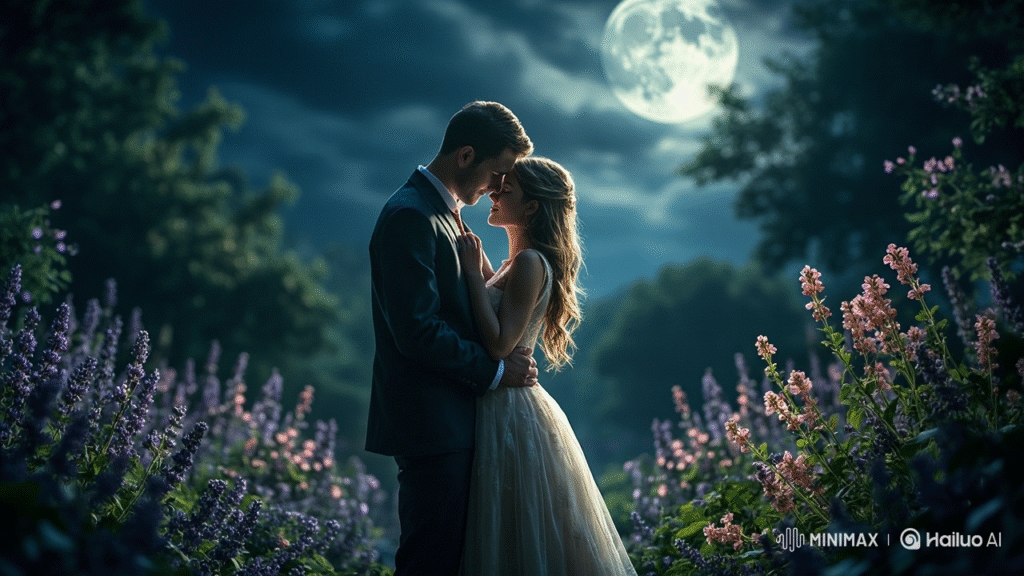
To the newly married, she gave rosemary for commitment. To those in heartbreak, she brewed hibiscus tea for healing. For the shy, she offered jasmine, which gave courage to speak. People said her garden was more than earth and plants it was a sanctuary for herbal romance.
One evening, a stranger named Arman came to the garden. His face was weary, his eyes carrying the weight of sorrow. He confessed that the woman he loved had left him, and his heart felt shattered. “Can herbs truly mend what is broken?” he asked.
Laila smiled gently. “Herbs cannot force love to return, but they can heal your spirit.” She prepared a blend of rose petals, hibiscus, and honey leaf, calling it “Moonlit Healing.”
Arman returned night after night, not only for the teas but for Laila’s kindness. They spoke of the stars, of life’s joys and sorrows, and of the way love could wound and heal alike. Slowly, Arman’s laughter returned, and Laila’s heart warmed each time he entered the garden.
The villagers began to notice. “There is a new herbal love story in the moonlit garden,” they whispered. “A tale not of herbs alone, but of two souls healing together.”
Over time, Arman and Laila turned the garden into a place where couples visited. They created a section of love herbs for couples, teaching others how to use herbs not just for remedies but for bonding lavender baths, rosemary rings, jasmine oils for intimacy.
Their garden became a living legend, a botanical love story where every herb and every heart was nurtured under the stars.
Story 4: The Secret Garden of Love Herbs
In the historic city of Samarkand, whispers spread of a secret apothecary that only opened to those with pure hearts. Behind its carved wooden doors lay a hidden paradise of herbs plants glowing faintly under candlelight. They were no ordinary plants but love herbs for couples, cultivated for centuries.
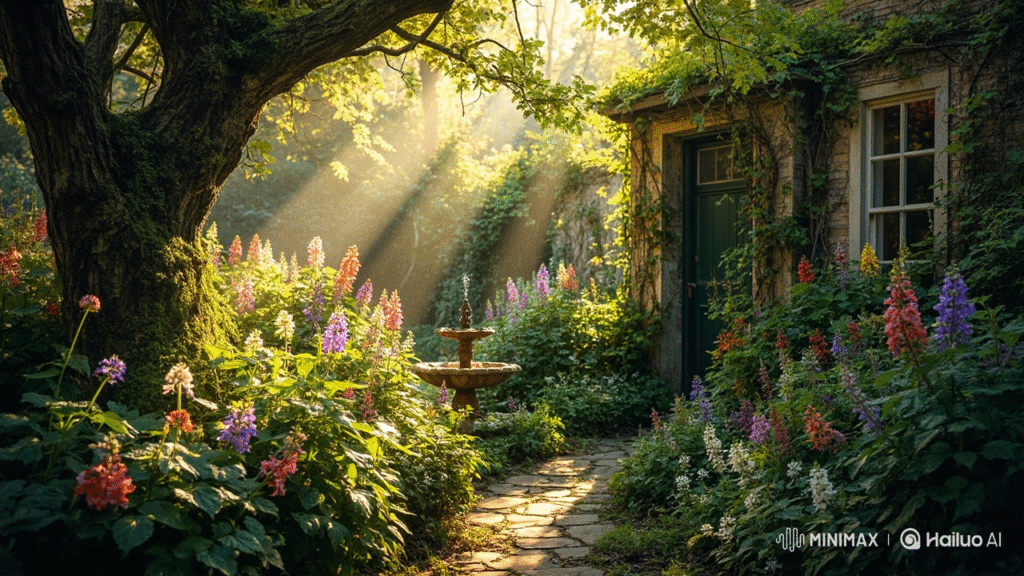
Zara, a young historian, stumbled upon the apothecary while researching ancient herbal traditions. There she met Idris, the quiet guardian of the garden. He guided her through rows of herbs, explaining each: “Rose for passion, basil for loyalty, chamomile for peace, sage for protection.”
Together, they began documenting the ancient texts about these plants. The more time Zara spent in the garden, the more she realized it wasn’t just research binding them it was an unspoken bond. The gentle way Idris cared for the plants mirrored the way he cared for her presence.
They brewed teas for newlyweds, created oils for healing trust, and crafted perfumes that symbolized affection. Their work became known across the city, and couples traveled to receive blessings in the form of romantic herbal remedies.
As time passed, Zara and Idris’ partnership deepened into love. Their story became known as the botanical love story of Samarkand a tale where herbs preserved history, healed hearts, and brought two kindred spirits together.
Story 5: The Herbal Love Song
By the banks of a quiet river lived Rafiq, a musician whose songs were beautiful yet incomplete. He felt his melodies lacked soul. Across the town lived Mira, an herbalist who believed herbs carried emotions, but her remedies felt empty without deeper meaning.

They met at a festival where Mira gifted Rafiq a pouch of romantic herbs lavender, rose, and clove. “Play your next song while holding this,” she suggested. “Herbs amplify feelings.”
Skeptical but curious, Rafiq tried. As he strummed his instrument, the fragrance of the herbs seemed to awaken something within him. His song flowed like never before filled with depth, warmth, and love.
From that day forward, they collaborated. Mira prepared blends of love herbs for couples while Rafiq composed melodies to match their spirit. Their sessions became famous people believed that listening to Rafiq’s music while holding Mira’s herbs could heal broken hearts.
Soon, festivals echoed with their creations. Lovers traveled far to hear the herbal love song and to take home romantic herbal remedies that carried their blessings.
Over time, their bond grew deeper. Rafiq realized his songs found their missing soul in Mira, and Mira found her remedies complete with his melodies. Their love became a legend, sung across villages as a botanical love story where fragrance and music united.
Conclusion of Love Rooted in Nature
Love rooted in nature is rarely loud, yet it is deeply powerful. From the quiet ritual of sipping lavender tea under the stars, to renewed hope kindled by mint in a rooftop garden these Herbal Love Stories show that true love often blossoms in the gentle actions, fragrant herbs, and shared silences.
If you enjoyed these tales, be sure to explore more romantic storytelling on Inspirednap.com, including Love Stories That Touch the Heart and the delicate, soothing Silent Witness series.
For deeper reading on herbal symbolism and the healing power of botanicals, check out external resources like the American Herbalists Guild (for meanings and uses of medicinal plants) or National Center for Complementary and Integrative Health to see how herbs have long played roles in emotional and physical wellness.

